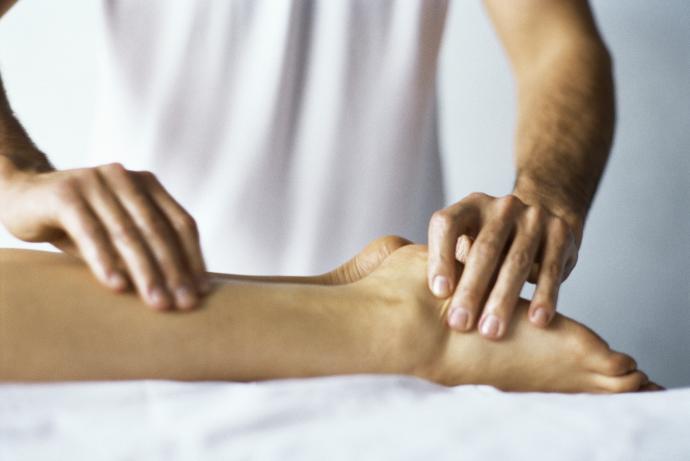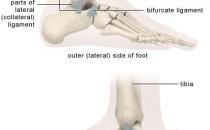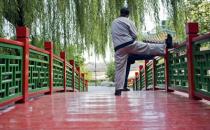Exercise-induced cramp

Muscle cramps are painful spasms that can happen during or immediately after you exercise. Your muscle goes into a hard, contracted state and you can't relax it. You will probably find that you have to stop what you’re doing for a while until it eases. The pain usually subsides within seconds or after a few minutes but, rarely, it may last for 15 minutes or more. Muscle cramps aren’t thought to have any serious long-term effects.
This article explains possible causes of cramps that come on with exercising, and how you can treat and try to prevent them.
What causes cramps?
What can I do to treat cramps?
How can I prevent cramps?
Action points
What causes cramps?
The exact cause of cramps is still unknown, but some things that may lead to them are:
- overexertion (straining or overusing a muscle)
- dehydration
- lack of fitness
- a lack of electrolytes (for example, sodium from salt) in your diet or a loss of electrolytes from your body, such as through sweating
- not enough blood getting to your muscles
- exercising in hot weather
- a poor running technique
Of these, the main cause is thought to be overexertion – either exercising for longer than usual or at a higher intensity. This would explain why it’s common to get cramp at the end of a long or strenuous activity such as a marathon, or after high-intensity exercise such as sprinting.
What can I do to treat cramps?
Although any muscle can go into spasm, cramps mostly affect the muscle groups in the:
- front of your thigh (quadriceps)
- back of your thigh (hamstrings)
- calf (gastrocnemius)
As anyone who has ever had cramp will testify, your first move when it comes on will be to do something to ease the pain. Here are some tips that should go some way towards relieving it.
- Stop whatever exercise you’re doing.
-
Gently stretch the cramped muscle as this may help to reduce the pressure on it. Hold the stretch until your muscle has stopped cramping.
- For cramp in your calf, hold your calf muscle in one hand while pulling your toes up towards your knee at the same time.
- If you have cramp in your quadriceps, in a standing position, lift your ankle towards your buttocks while holding the top of your foot. Pull your heel gently in to your buttocks to stretch.
- To stretch your hamstring muscles, sit down and stretch your leg out in front of you and, keeping your knee straight, lean forward to touch your foot.
- Gently massage the muscle.
- Drink some water to replace any fluids you may have lost.
- Walk around a little.
- Ice may give some relief if your muscles are tender and sore. Use an ice pack or ice wrapped in a towel. Don’t apply ice directly to your skin as it can damage your skin. You can use the ice while stretching to reduce blood flow, which can help the muscle to relax.
How can I prevent cramps?
As with any injury, prevention is better than treatment. You may find the following tips useful for avoiding injuries, including cramp, before they happen.
Training
Try to build up the intensity and duration of your training gradually. This way, your body will have time to adjust to the increasing activity.
Hydration
Make sure you stay well hydrated while you’re exercising as dehydration is thought to be a cause of cramps. Urine colour is a useful indicator of how well hydrated you are. Generally, dark urine suggests that you’re dehydrated, with pale yellow urine being ideal.
Replacing electrolytes
After exercise, careful electrolyte replacement may help to prevent muscle cramps. If you eat a healthy, balanced diet, this will usually do the trick. Exercising in hot or humid conditions will mean you’re likely to lose more salts and electrolytes from sweating. If this is the case, you may need to replace them by adding salt to your food or drinking certain sports drinks. However, don't do this if you have high blood pressure or problems with your heart or kidneys because too much salt can add to these problems. Ask your GP for more advice.
Equipment
Wear appropriate clothing for exercising and ensure your trainers are a good fit. If you’re using any exercise equipment, make sure it’s set up correctly for you and that you know how to use it safely.
Stretching
It’s a common belief that stretching your muscles reduces your likelihood of developing injuries, including cramp. However, the benefit of stretching before or after exercise is unproven.
If you regularly get muscle cramps, see your GP or physiotherapist for advice.
Action points
- Build up your training gradually.
- Make sure you drink enough before, during and after exercising.
- Wear the right clothes and properly fitting trainers when you exercise.
- See your GP if you regularly get cramps.
Further information
The National Sports Medicine Institute of the United Kingdom
www.nsmi.org.uk
Sources
- Muscle cramps. Medlineplus. www.nlm.nih.gov, published 18 April 2010
- Muscle cramp. American Academy of Orthopaedic Surgeons. www.orthoinfo.aaos.org, published May 2010
- Muscle cramps. The National Sports Medicine Institute of the United Kingdom. www.nsmi.org.uk, published 2009
- Katzberg HD, Khan AH, So YT. Assessment: symptomatic treatment for muscle cramps (an evidence-based review). Neurology 2010; 74:691–96. www.aan.com
- Bergeron MF. Muscle cramps during exercise — is it fatigue or electrolyte deficit? Curr Sports Med Rep 2008; 7(4):S50–55. doi: 10.1249/JSR.0b013e31817f476a
- Charley horse. Medlineplus. www.nlm.nih.gov, published July 2010
- Muscle cramps. Merck Manuals Online Medical Library. www.merck.com/mmhe, published April 2010
- Hypertension in people who do not have diabetes mellitus. Clinical Knowledge Summaries. www.cks.library.nhs.uk, published July 2009
- Why cut down on salt? Food Standards Agency. www.eatwell.gov.uk, accessed 10 May 2010
Related topics
Avoiding sports injuries
Healthy eating – an overview
Keeping hydrated
Nutrition for exercise
Salt
















